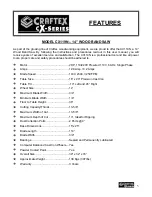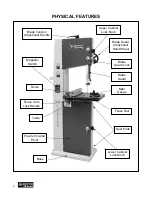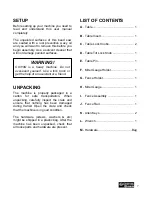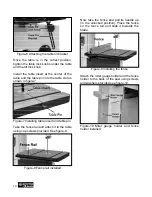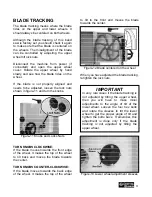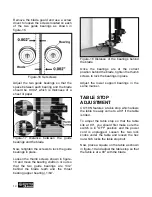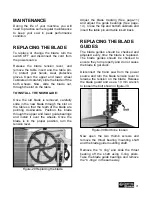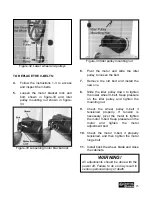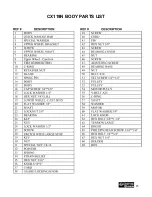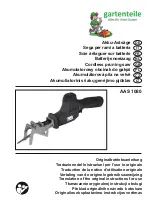
19
OPERATIONS
Before operating the band saw make sure
you have performed the following
adjustments:
Blade tension adjustment
Blade tracking adjustment
Guide bearings adjustment
Make sure all the guards are in place
RIPPING
Cutting solid wood with the grain cutting
down the length of the work-piece is called
ripping.
Adjust the fence on the rails, according to
the width of the cut on the work-piece and
turn the hand-wheel to set the guide post
assembly 1” above the work-piece.
Now, turn the band saw ON and use a push
stick or the band saw finger protector to
push the work-piece against the blade.
CROSSCUTTING
Cutting solid wood across the grain and
cutting plywood across the width of the
work-piece is called crosscutting.
Mark the work-piece where you want to
start the cut from and make sure the miter
gauge is at 90° position on the miter slot.
Place the work-piece on the table so that
the marked point is aligned with the blade
and hold the work-piece against the miter
gauge.
Turn the band saw ON and feed the work-
piece against the blade.
RESAWING
Cutting a work-piece into two or more
thinner pieces is called resawing. Wider
blades give better result, when resawing.
To resaw a work-piece make sure that the
table is at a 90° with the blade and using a
wider blade will give better results.
Adjust the fence according to the width of
the cut you want, and lock it in position.
Turn the band saw ON and feed the work-
piece into the blade using feed paddles until
the blade is completely through the work-
piece.
CUTTING CURVES
For cutting curves always try to use
narrower blades. When cutting curves feed
the stock into the blade and turn it very
carefully so that the blade follows the line of
cut and make sure the blade does not twist.
Make relief cuts through the waste part of
the work-piece which makes the job easier
and prevents the blade from twisting.
WARNING!
Do not use your fingers to feed narrow
work-pieces into the blade. If you slip,
your fingers might come close the blade.
Always use a push stick.

